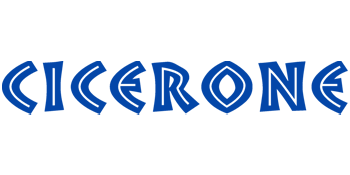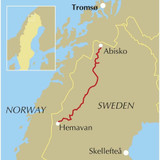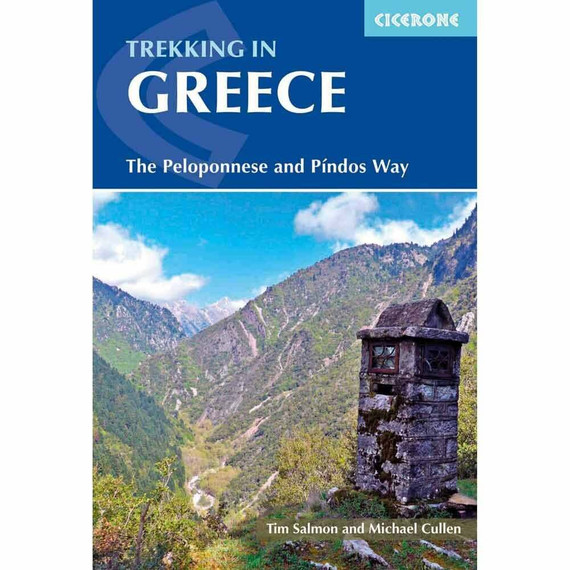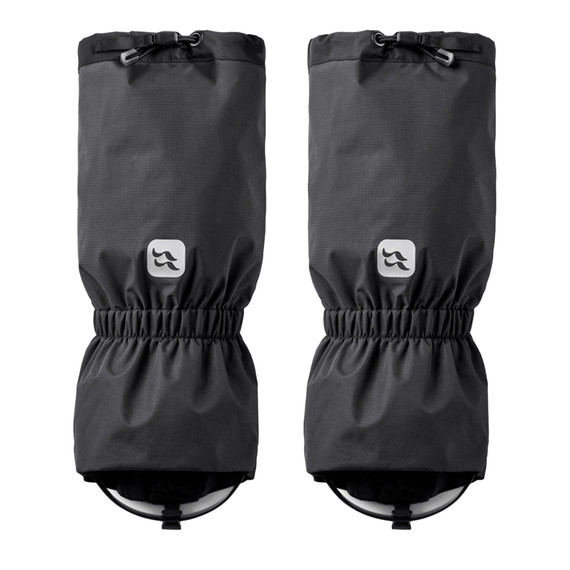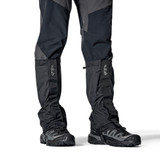Jump to: Our Verdict / Features / Specifications
Guide to the Kungsleden (King's Trail), Sweden's premier long-distance trek. Lying mostly within the Arctic Circle, the 460km route across Lappland is presented in 28 stages but can be walked in shorter sections if preferred. Includes an optional ascent of Kebnekaise, Sweden's highest peak, plus notes on huts and wild camping.
Cicerone says
Sweden's most famous long-distance trail, the Kungsleden (King's Trail) traverses the land of the Sámi people and the midnight sun, stretching 460km between Abisko and Hemavan. Around half the route lies within the Arctic Circle showcasing an ever-changing landscape of snowy mountains, deep glacial valleys, open fell, expansive lakes and verdant forest. The fully waymarked trail is comprised of five continuous and distinct sections: these can be walked individually or a thru-hike will take around a month. The guide also includes the popular Abisko to Nikkaluokta circuit, which can be completed in a week, and an ascent of Kebnekaise, Sweden's highest peak at 2098m.
In addition to clear route description and mapping, you'll find a wealth of practical advice covering accommodation and facilities, equipment and resupply and detailed notes on how to get to and from the section start and finish-points. A Swedish and Fell Sámi glossary can be found in the appendix. Although there are plentiful opportunities for wild camping, three of the five trail sections are equipped with huts (many including a shop and a sauna) making them easily accessible to all. The remaining two sections have a more remote feel that will appeal to those intent on finding some solitude. To add further colour, there are seven mandatory lake crossings on the trail with the option of rowing or using the motorised service: full details are provided in the text.
The Kungsleden passes through five national parks, including Sarek. Other highlights include the striking Tjäktjavagge glacial valley and the famous hay meadows of Aktse, perfectly framed by the azure Lájtávrre delta and the sheer chiselled face of Skierrffe. The Kungsleden invites you to step into a new world, and it may well prove to be the start of a long and rich association involving many repeated visits.
Our Verdict
For nearly 50 years Cicerone have been producing guidebooks on recognised treks, regions, areas and general tips for hikers.
We have used them countless times and they've always provided excellent insight and knowledge that you only get through experience, giving you the edge to make your trip a success and more enjoyable too.
If you're a gram counter you can easily remove sections of the book to take with you making your own ultra-lightweight guidebook with only the essential sections that you require.
- Reviewed by Ultralight Outdoor Gear
Features
- Seasons: Best walked between late June and early September.
- Centres: Abisko, Kebnekaise Fjällstation, Nikkaluokta, Saltoluokta, Kvikkjokk, Jäkkvik, Adolfsström, Bäverholmen, Ammarnäs, Hemavan
- Difficulty: The five trail sections are non-challenging and suitable for all able walkers; a thru-hike is more demanding in terms of time, commitment and planning. Many opt to make use of the huts found on three of the trail's sections to minimise weight. Some sections are suitable for family groups.
- Must See: Abisko, Nikkaluokta, Lapone Mountains, Arjeplog Fells, Aktse, Syterskalet and Tjäktjavagge glacial valleys, five national parks including Sarek, Kebnekaise (Sweden's highest peak at 2098m), Hemavan
Specifications
- Weight: 320g
- Published: 15 May 2019
- Edition: First
- Number of pages: 272
- Size: 17.2 x 11.6 x 1.5cm
Table of Contents
Contents
Introduction
The subarctic environment
Plants and animals
Regional history
When to go
Planning your walk
Transport
Boat crossings
Accommodation
Hut life and facilities
The truth about sauna
Trail marking and access
What to take
Mapping and GPS
Communications and electronics
Resupply
Safety and wellbeing
Using this guide
Section 1 – Abisko to Saltoluokta
Stage 1 Abisko to Abiskojaure
Stage 2 Abiskojaure to Alesjaure
Stage 3 Alesjaure to Tjäktja
Stage 4 Tjäktja to Sälka
Stage 5 Sälka to Singi
Stage 6 Singi to Kaitumjaure
Stage 7 Kaitumjaure to Teusajaure
Stage 8 Teusajaure to Saltoluokta via Vakkotavare
Additional itineraries
Additional itinerary 1 Singi to Nikkaluokta (alternative finish to Section 1)
Additional itinerary 2 Kebnekaise summit
Section 2 – Saltoluokta to Kvikkjokk
Stage 9 Saltoluokta to Sitojaure
Stage 10 Sitojaure to Aktse
Stage 11 Aktse to Pårte
Stage 12 Pårte to Kvikkjokk
Section 3 – Kvikkjokk to Jäkkvik
Stage 13 Kvikkjokk to Tsielekjåkkå
Stage 14 Tsielekjåkkå to Gistojávrátj
Stage 15 Gistojávrátj to Gásakláhko
Stage 16 Gásakláhko to Vuonatjviken
Stage 17 Vuonatjviken to Jäkkvik
Section 4 – Jäkkvik to Ammarnäs
Stage 18 Jäkkvik to Luvtávrre
Stage 19 Luvtávrre to Bäverholmen
Stage 20 Bäverholmen to Tjiegnatisjávrrie
Stage 21 Tjiegnatisjávrrie to Rävfalls
Stage 22 Rävfalls to Ammarnäs
Section 5 – Ammarnäs to Hemavan
Stage 23 Ammarnäs to Aigert
Stage 24 Aigert to Serve
Stage 25 Serve to Tärnasjö
Stage 26 Tärnasjö to Syter
Stage 27 Syter to Viterskals
Stage 28 Viterskals to Hemavan
Appendix A Summary of facilities
Appendix B Useful contacts
Appendix C Summary of boat crossings
Appendix D Language

